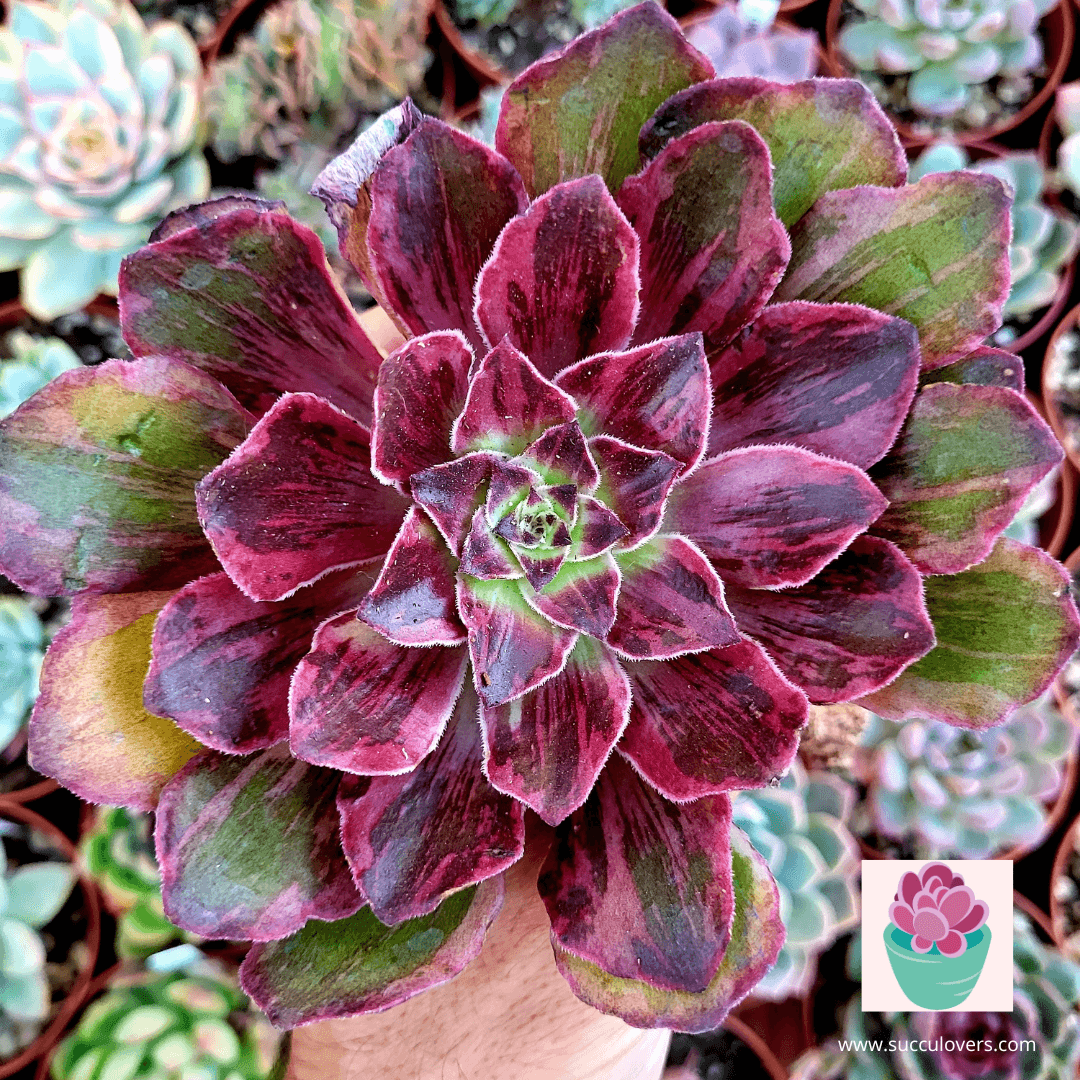How to take care of my aeonium so that it doesn't die trying?
🌴 General characteristics of the aeonium 🌴
Aeoniums are succulent plants belonging to the Crassulaceae family, originating mostly from the Canary Islands. They grow in subtropical climates with long periods of drought and are used to hydrating with fog, morning dew or humidity. After the summer or winter rest they will appreciate some watering by spraying before watering to hydrate the substrate.
They are very resistant plants to adverse conditions. They often grow on cliffs, steep slopes, rocks, walls, mineral substrates... All these surfaces have in common that they are draining substrates, which means that, even if it rains abundantly, the water is not retained and can cause stagnation in their areas. estate.

🌴 Location 🌴
It is a 100% outdoor plant, it likes bright, airy places with strong winds. To keep it indoors, you need plenty of light and aeration, among other things. It does not support temperature changes well, it cannot have heating or air conditioning. In areas where winters are not mild, it could be kept in a window with plenty of light and regular ventilation.
You can grow your aeonium in soil or in a pot. We recommend planting in the ground only in areas with Mediterranean or subtropical climates. If you choose to plant your aeonium in the ground, just like in a habitat, they will appreciate a sloping spot in your garden. In this type of cultivation, the plants are vigorous, multiplying 5 times their size in one year. When grown in a pot, the plant will adapt its growth to the size of the pot.
Variegated specimens are less resistant and must be grown in pots to protect them from the strong sun in summer and cold in winter, even in more favorable climates.
🌴 Humidity and irrigation 🌴
They are plants that can spend long periods without water when conditions are adverse (excessive heat or cold). In the same way, with favorable conditions we can water abundantly once a week, always avoiding the substratum's waterlogging.
Aeoniums do not support the combination of low temperatures with high humidity in the soil. With minimum temperatures below 10º, we will suppress the risks. Some species can resist down to -5ºC, but most will suffer frost damage. We must protect them!
🌴 Substratum 🌴
They are plants that grow and develop in poor soils. There is no need to spend money to make a substrate made up of many ingredients or heavily fertilized. A mixture of 2/3 of pumice or volcanic gravel and 1/3 of peat will be enough for your plant to develop well.
🌴 Seasons and activity 🌴
-Summer: rest
Under conditions similar to those of their habitat, these plants aestivate in summer (as other living things hibernate in winter). This means that they stop their activity during the hottest season and thus combat the long periods of drought, waiting for more favorable conditions for their development. The rosettes gradually close to minimize evaporation and the dry leaves that they show are a natural protection for the plant, in this case they should not be removed. Not all varieties begin this dormancy at the same time
During this rest, the plants should not be watered, since they will not absorb the water due to their inactivity and it can cause the proliferation of fungi and rotting of the stem or roots.On the hottest days, they could be cooled at night with a spray in the form of a nebula directly on the leaves. To detect if the plant is at rest, it is enough to observe its evolution: the closer they are to this resting phase, the rosettes They are gradually closing. With the drop in temperatures towards the end of summer, the plants will reopen and resume their activity. In our area, this rest or "estivation" occurs from June 15 to September 15 approximately. The further north of Europe, the higher the altitude or the greater the temperature range, it is possible that the plants do not go dormant and, in this case, they can be watered.
During this season we recommend placing the plants in a shaded, ventilated and as cool area as possible, avoiding direct exposure to the sun. We do not recommend transplanting the plant or making cuttings in this period.

Aeonium at rest
- Autumn-Winter: growth
This stage is the busiest for the aeonium. At the beginning of autumn, they gradually open their rosettes, lose their intense color and resume vegetative growth. This is the ideal time for reproduction by seed or cutting. The seeds will germinate in a few days, will have a vigorous growth and will reach the summer already as developed plants. The cuttings heal sooner and in a matter of days they will be generating roots and activating growth without stopping the activity of the plant.
At this time, the aeoniums can be exposed to the sun without risk of burns, taking more care with the variegated specimens. If the temperatures are mild and the weather is good, we can water abundantly once a week.
During the winter, in regions that do not have a temperate climate, we recommend stopping watering if temperatures are below 10ºC. In addition, although the most robust varieties can resist temperatures below 0ºC, we recommend protecting or covering our most delicate and variegated specimens.

Aeonium sedifolium variegated that has been protected in summer from direct sun in the shade with another that has been exposed to the sun for one hour in the morning.
-Spring: growth and flowering
In early spring, the plants will begin to slow down and show their most intense colors. If you notice unusual growth on a head of your aeonium, it is probably preparing to bloom. They are monocarpic plants, so the rosette that flowers dies later, although sometimes the stem develops new seedlings after flowering. Aeoniums have very low requirements, so we do not recommend fertilizing as overfertilization greatly weakens the plant.
We do not recommend making cuttings in this period, as they would enter the rest period weak.
.

